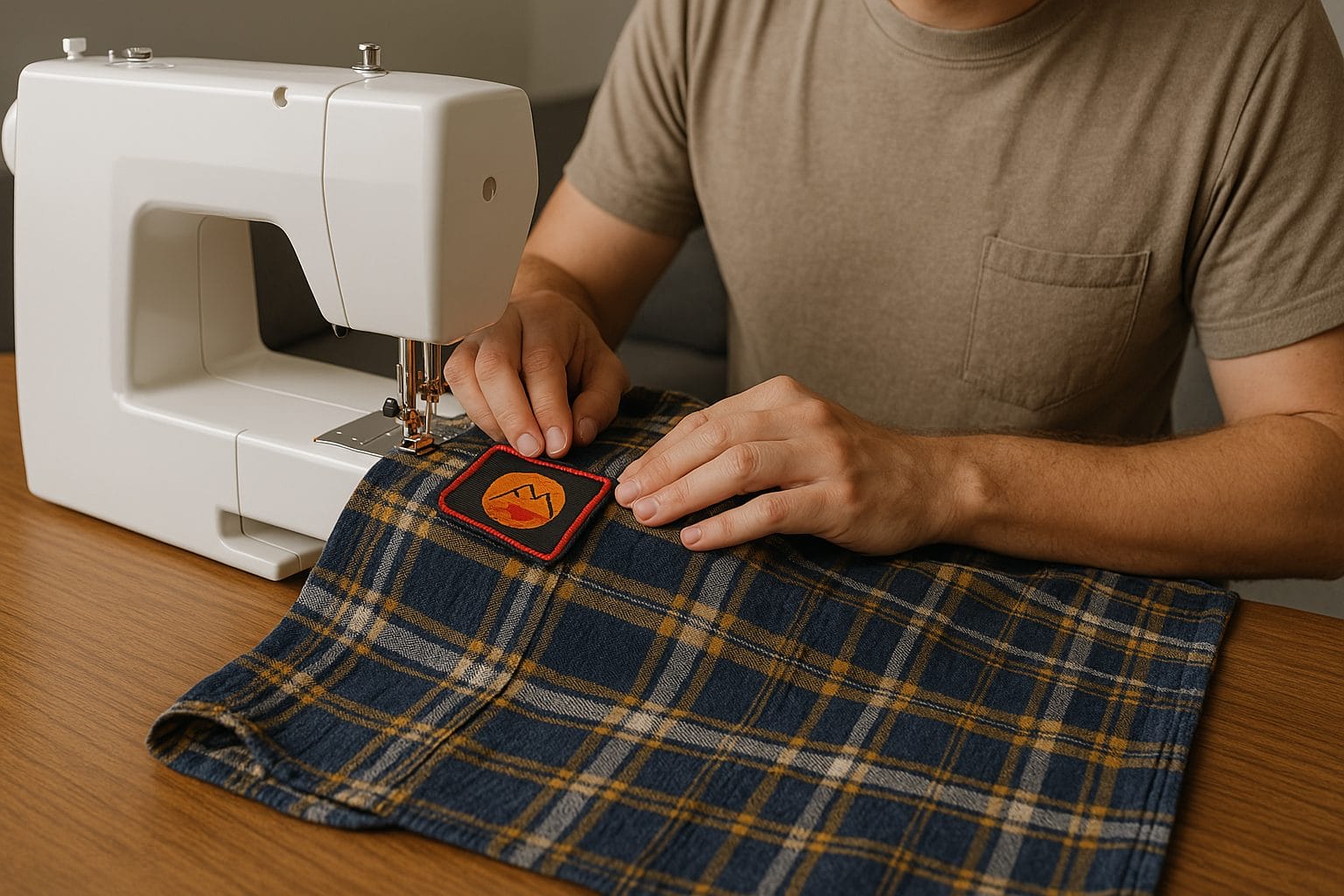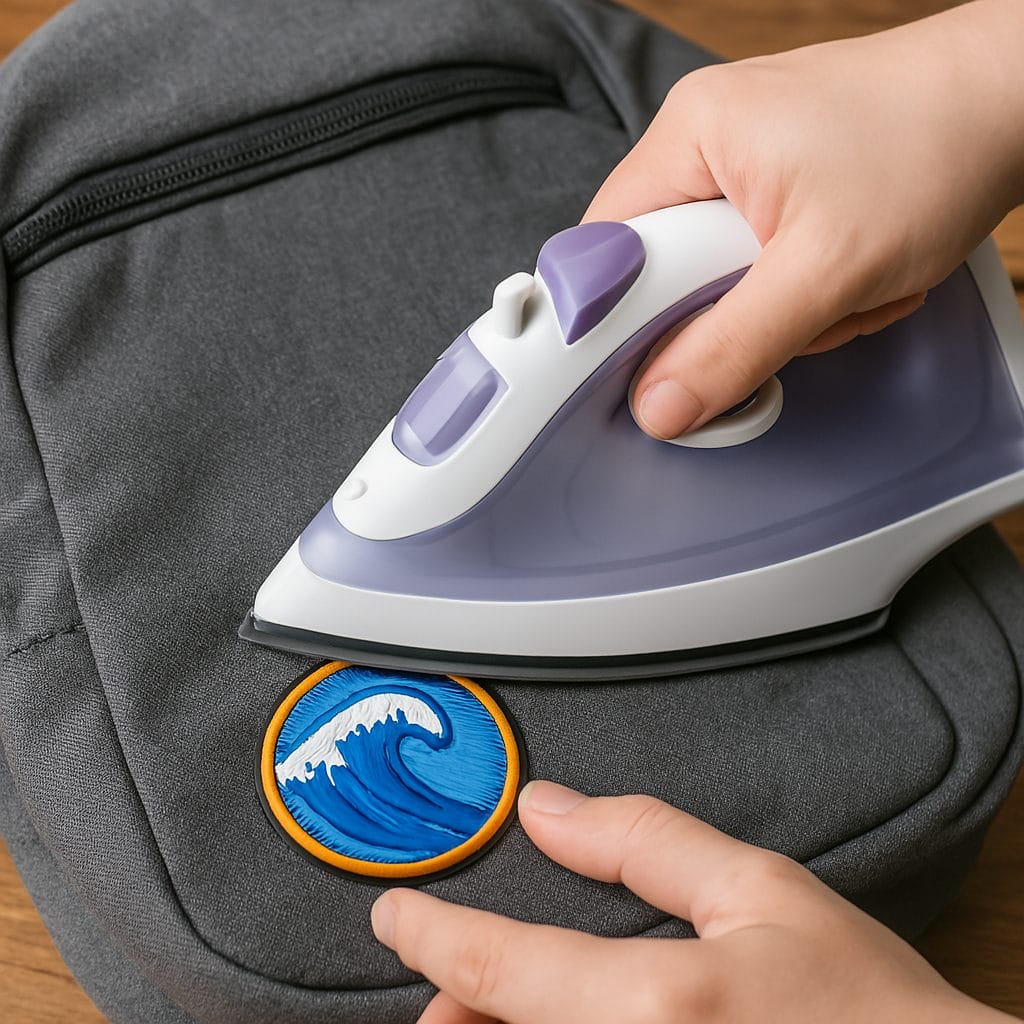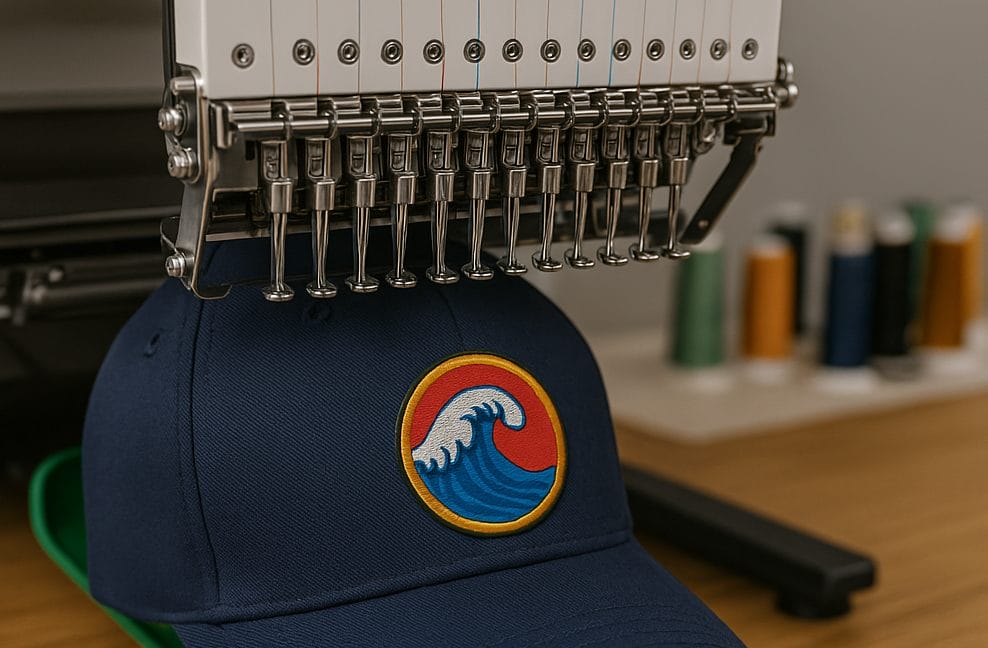How to Apply Patches: Iron-On vs Sew-On for Hats and Clothing

Adding a custom patch is a great way to personalize your clothes or hats. Whether you’re decorating a denim jacket, fixing a hole, or showing off your favorite team, patches are a fun and creative option. But what’s the best way to attach them? Should you iron it on, sew it, or try something else?
This blog post will show you the easiest and most effective ways to apply patches and help you decide which method is right for you.
Patch Types
Before we begin, let’s talk about the different types of patches. The most common are embroidered patches, custom iron-on patches, Velcro patches, and sew-on patches. Each one works best with specific application methods, so it’s important to understand the differences.
Ironing Patches
Iron-on patches are popular because they’re fast and easy to use. They work well on sturdy fabrics like denim jackets, canvas bags, and cotton shirts. However, delicate fabrics like silk or nylon might melt under high heat, so avoid using iron-on patches with those.
Iron-On Patch Instructions
Start by preparing your tools. You’ll need an ironing board or other heat-resistant surface, a hot iron (with no steam), parchment paper, and your custom patches. Place the adhesive side of the patch down on the desired location of your fabric item. Make sure the patch area is clean and flat.
Next, place a piece of parchment paper over the patch to protect it from direct heat. Press down with the highest setting on the iron for about 30 to 45 seconds using firm pressure. Avoid sliding the iron, as that can shift the patch. After heating, let it cool down before touching it. This helps the heat-activated adhesive stick properly.

Iron On Patches On Polyester
Be cautious with polyester. Always test a small area first, as this fabric can melt under direct contact with high temperatures. If you’re worried, use fabric glue, Velcro patches, or a sew-on patch instead.
Best Practices
Always check the manufacturer’s instructions for your patch. To avoid burns, use an ironing board or a flat surface with a thin cloth under the fabric. Don’t use a hair straightener. It doesn’t provide enough appropriate heat for a secure attachment. Also, avoid putting the patched item in the washing machine for at least 24 hours after applying it.
Sewing Patches
Sewing is often the best method for long-lasting results. This works especially well for military patches, work uniforms, or anything that will be worn and washed often.
Machine Sewing
Using a sewing machine gives a strong, even stitch. It’s fast and works great for thicker materials like jackets and bags. Depending on your style, choose a thread color that either matches or contrasts with the patch. Stitch around the patch’s edges, and make sure the back of the patch is smooth before sewing.
Hand Sewing
If you don’t have a machine, hand sewing works just as well. It’s perfect for tricky areas like hat fronts or sleeves. Use a needle and strong thread to stitch around the edges of the patch. Try to keep a hidden seam for a clean, professional look. Thicker patches like PVC rubber patches can be difficult to hand sew. We suggest machine sewing for PVC patch application.
Patch File and Thread Color
When ordering custom patches, don’t forget to upload a clear patch file and choose your thread color wisely. These choices affect how your final patch will look, and the right color combination can really make your design stand out.

Apply Patches Without Sewing
Need to apply a patch quickly without sewing? Try alternative methods like fabric adhesive or fabric glue. These methods work well for clothing patches on costumes or kid’s uniforms. But before trying fabric glue, we suggest ironing the patch using a thin cloth and appropriate heat.
Transfer Paper and Fabric Glue Tips
If your patch won’t stick well or needs extra strength, use iron-on adhesive spray on the back of the patch before ironing. Something the added layer of heat-activated adhesion can do just the trick. You can also use transfer paper to help guide your iron safely across the patch. Be careful when working on pieces of fabric with loose threads, as they can burn under high heat.
Best Option for Hats?
Hats can use both iron-on and sew-on patches, but sewing is usually the best way. Since hats bend and stretch, a sewn patch stays in place much better over time. The Monterey Company does offer patch-to-hat sewing services. Just fill out this form and ask about sewing.
Iron On Method vs Sewing: Which Is the Best?
If you want something quick and easy, go with the iron-on method. But if you’re looking for durability, sewing is the better choice. Polyester items are best paired with sewing or fabric glue to avoid damage. Sewing ensures a secure attachment for hats and items that will be used often.
Best Results Every Time
To get the best results with ironing on patches, follow the instructions closely. Use a heat-resistant surface and avoid rushing the cool-down period. Test on scrap fabric before applying the patch to your final piece, and try not to wash the item in the washing machine right away. For the best results when patch sewing, contact a skilled seamstress. The Monterey Company does offer sewing services. Simply fill out this form and ask for sewing services.
Where to Get Quality Patches?
If you’re looking for high-quality embroidered patches or any type of custom patches, you can’t go wrong with The Monterey Company, a trusted supplier with over 30 years of patch-making experience. We offer everything from military patches to custom chenille patches and everything in between. Ask for free samples to test the best method for applying patches. We offer free shipping on samples, too, just ask for a sample pack.
Whether you iron or sew, the best way to apply patches depends on your fabric, your tools, and how long you want them to last. Use this guide, grab your patch, and turn your gear into something one-of-a-kind.
Jack Roddy
I love anything that involves a thrill! Some of my favorite after-work activities include skiing, surfing, kiteboarding, riding my motorcycle and fly fishing on the Deschutes river.